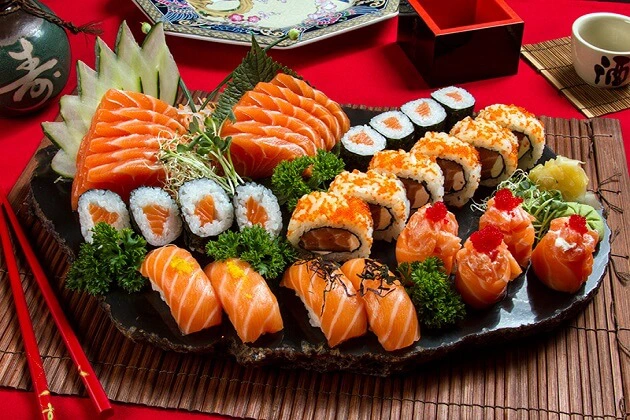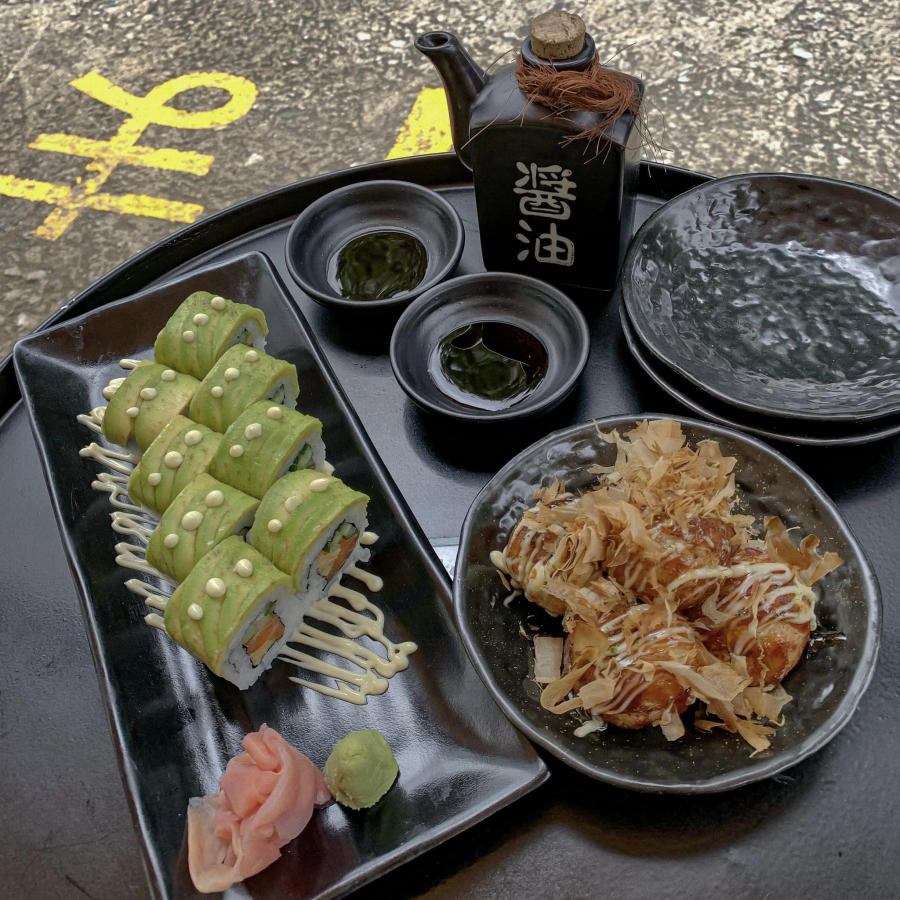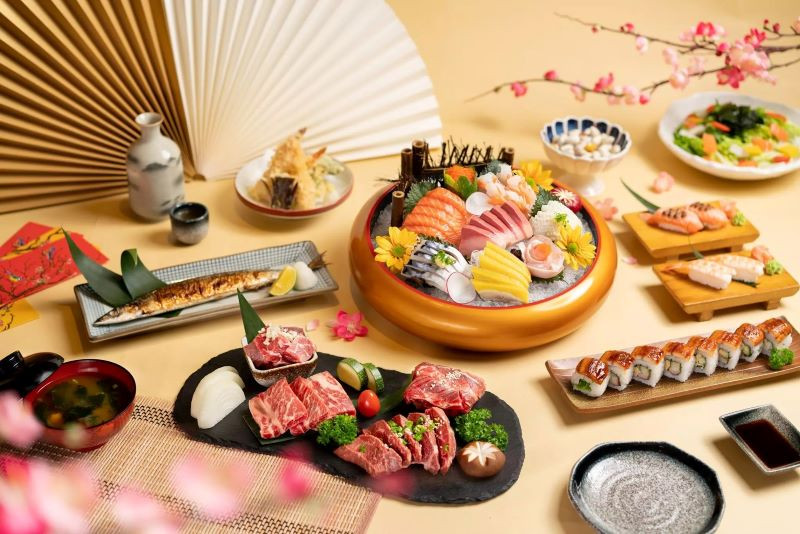No products in the cart.
Blog
Khám Phá ẩm Thực Nhật Bản: Từ Mentaiko đến Oyaki
[

Khám Phá Ẩm Thực Nhật Bản: Từ Mentaiko đến Oyaki

Introduction:

Japan, a land of rising sun and ancient traditions, boasts a culinary landscape as rich and diverse as its history. From the delicate flavors of sushi to the hearty warmth of ramen, Japanese food has captivated the world with its unique blend of fresh ingredients, precise techniques, and subtle seasoning. This exploration delves into the heart of Japanese gastronomy, showcasing the vibrant tapestry of flavors, textures, and regional specialties. We’ll journey from the spicy delight of mentaiko to the savory embrace of oyaki, uncovering the secrets behind some of Japan’s most beloved dishes. Prepare to tantalize your taste buds and embark on a culinary adventure like no other!
Mentaiko: The Spicy Delight of Pollock Roe
Mentaiko, or seasoned cod roe, is a fiery, umami-packed ingredient that adds a zing to many Japanese dishes. Its bright orange hue and bursting flavor make it a standout component in everything from pasta to onigiri. The distinct flavor profile results from a unique curing process, often involving a marinade of chili peppers, mirin, and sake.
- The Curing Process: The crucial step that differentiates mentaiko from other roe. A careful balance of ingredients creates that signature spicy and savory taste.
- Regional Variations: Different regions of Japan have their own unique mentaiko recipes, resulting in a spectrum of flavor profiles.
- Versatile Ingredient: Mentaiko’s bold flavor works well in a variety of dishes, from simple appetizers to complex entrees.
- Perfect Pairing: Often paired with mayonnaise, creating a creamy, spicy, and delicious sauce.
- Nutritional Value: Rich in protein, vitamins, and healthy fats.
- Beyond Cod Roe: While cod roe is most common, other fish roe can be similarly prepared and seasoned.
Ramen: A Bowl of Soul-Satisfying Comfort
Ramen, a staple of Japanese cuisine, is much more than just noodles in broth. Each bowl tells a story of meticulous preparation, featuring a perfectly balanced broth, chewy noodles, and a variety of toppings. From the rich tonkotsu broth to the lighter shio, the variations are endless, reflecting regional differences and individual chef’s creativity.
- Broth is Key: The heart and soul of ramen, ranging from rich pork-based broths to lighter soy or miso-based versions.
- Noodle Selection: Different types of noodles offer varied textures and mouthfeels, enhancing the overall ramen experience.
- Toppings Matter: Char siu pork, soft-boiled eggs (ajitama), menma (fermented bamboo shoots), nori (seaweed) – each topping plays a crucial role in balancing flavors and textures.
- Regional Styles: Hokkaido miso ramen, Hakata tonkotsu ramen, Sapporo miso ramen—each region boasts unique ramen styles.
- Customization: Many ramen shops allow customers to adjust the richness, spiciness, and toppings according to their preferences.
- Beyond the Bowl: Ramen culture extends beyond the food itself, encompassing the atmosphere and social aspect of enjoying a bowl of ramen.
Sushi: The Art of Raw Fish and Rice
Sushi, a global culinary phenomenon, is a testament to the Japanese appreciation for fresh, high-quality ingredients and meticulous preparation. While often associated with raw fish, sushi encompasses a broader range of dishes, including vegetarian and cooked options. The art of sushi making requires years of practice to master the precise knife skills and understanding of flavor balancing.
- Rice is Crucial: The quality of sushi rice, its preparation and seasoning, directly affects the overall taste and texture.
- Fish Selection: The freshness and quality of the fish are paramount; only the finest cuts are used in high-end sushi restaurants.
- Preparation Techniques: The precision and artistry of slicing and arranging the fish are essential to the aesthetic appeal and taste.
- Variety of Styles: Nigiri, maki, sashimi – different sushi styles offer unique experiences.
- Accompaniments: Wasabi, soy sauce, pickled ginger – these accompaniments complement the flavors of sushi.
- Beyond the Fish: Vegetarian sushi options and unique ingredients demonstrate the versatility of this culinary art form.
Oyaki: The Savory Delights of Steamed Dumplings
Oyaki are savory steamed dumplings, a hearty and comforting food found primarily in the Nagano region of Japan. These half-moon-shaped parcels, filled with a variety of ingredients, represent a simple yet satisfying culinary experience. The soft dough, coupled with the flavorful fillings, makes oyaki a true culinary gem.
- Regional Variations: Different regions have their own unique versions of oyaki, each with distinctive fillings and preparation methods.
- Versatile Fillings: From wild greens and miso to mushrooms and pork, the fillings showcase the season’s best ingredients.
- Dough Preparation: The preparation of the dough is vital, influencing the texture and overall quality of the oyaki.
- Steaming Technique: The steaming process is crucial for achieving a perfectly soft and fluffy dough.
- Serving Suggestions: Often served with a dipping sauce, enhancing the overall flavor profile.
- A Taste of Tradition: Oyaki represents a simple yet profound connection to regional culinary traditions.
Tempura: The Art of Light and Crispy Batter
Tempura, a technique of deep-frying seafood and vegetables in a light batter, results in a crispy, airy, and delicious dish. The secret to perfect tempura lies in the lightness of the batter, the temperature of the oil, and the speed of frying. The result is a textural masterpiece, showcasing the natural flavors of the ingredients.
- Batter Consistency: The batter must be light and airy, not heavy or gummy. This is achieved through precise technique and the right ingredients.
- Oil Temperature: Maintaining the correct oil temperature is critical to achieving the perfect level of crispiness.
- Frying Technique: The speed and method of frying influence the texture and evenness of the cooking.
- Ingredient Selection: Fresh, high-quality ingredients are essential to showcasing the best flavors.
- Dipping Sauces: Tempura is often served with a variety of dipping sauces, such as tentsuyu (a light soy-based broth) and other seasonings.
- Beyond Seafood: While often associated with seafood, tempura can feature a wide range of vegetables.
Table Summarizing Key Features:
| Dish | Key Feature | Distinctive Flavor Profile | Regional Variations |
|---|---|---|---|
| Mentaiko | Spicy, seasoned cod roe | Spicy, savory, umami | Varies by region |
| Ramen | Broth, noodles, toppings | Varies greatly depending on broth and toppings | Numerous regional styles |
| Sushi | Fresh fish, rice, preparation technique | Varies greatly depending on fish and style | Numerous styles (Nigiri, Maki, Sashimi) |
| Oyaki | Steamed dumplings, various fillings | Savory, comforting | Varies by region and filling |
| Tempura | Deep-fried in light batter | Light, crispy, showcasing natural flavors | Variations in batter and dipping sauces |
Conclusion:
This culinary journey through Japan has only scratched the surface of its incredible gastronomic diversity. From the fiery kick of mentaiko to the comforting warmth of oyaki, each dish offers a unique window into Japanese culture and culinary artistry. The meticulous preparation, attention to detail, and emphasis on fresh, high-quality ingredients are hallmarks of Japanese cuisine, making it a truly exceptional and rewarding culinary experience. Whether you’re a seasoned foodie or a curious newcomer, exploring the diverse world of Japanese food is an adventure that will tantalize your taste buds and leave you craving more. So, pack your bags (metaphorically, of course!), and prepare for a truly unforgettable gastronomic adventure!
Keywords: Japanese Food, Mentaiko, Ramen, Sushi, Oyaki, Tempura
]

Bài viết hay quá! Mình thích nhất phần về mentaiko, đọc xong thèm quá đi mất! Cảm ơn tác giả đã chia sẻ những thông tin bổ ích và hấp dẫn như vậy nha!
Tệ quá! Hình ảnh minh họa ít quá, đọc không đã mắt chút nào. Nội dung cũng sơ sài, không đủ chi tiết. Phí tiền data của tôi!
Mình thấy oyaki được nhắc đến ít quá, nên thêm nhiều thông tin hơn về cách làm và các loại nhân khác nhau nữa nhé. Bài viết này cung cấp một cái nhìn tổng quan khá tốt về ẩm thực Nhật Bản.
Tôi không đồng ý với quan điểm của tác giả về mentaiko. Theo tôi, mentaiko ngon nhất vẫn là loại làm từ cá tuyết chứ không phải cá hồi. Tác giả cần nghiên cứu thêm!
Ồ, thì ra Nhật Bản còn nhiều món ăn ngon đến thế cơ à? Chắc mình phải dành cả đời để ăn hết các món trong bài viết này mất thôi! *cười trừ*
Bài viết hay đấy, nhưng mà… đọc xong vẫn thấy đói. Tác giả ác ghê, đăng bài lúc này để hành hạ người đọc à?
Haha, đọc bài này mà tưởng mình đang xem phim hoạt hình Nhật Bản ấy. Mentaiko bay lượn, oyaki nhảy múa trên trang giấy! Tuyệt vời!
Tuyệt vời! Bài viết rất chi tiết và đầy đủ thông tin. Tôi đã học được rất nhiều điều mới mẻ về ẩm thực Nhật Bản. Cảm ơn tác giả!
Bài viết hay nhưng mà… hình như thiếu một số món ăn nổi tiếng khác của Nhật Bản nhỉ? Ví dụ như sushi, ramen… Nên bổ sung thêm cho đầy đủ hơn nha.